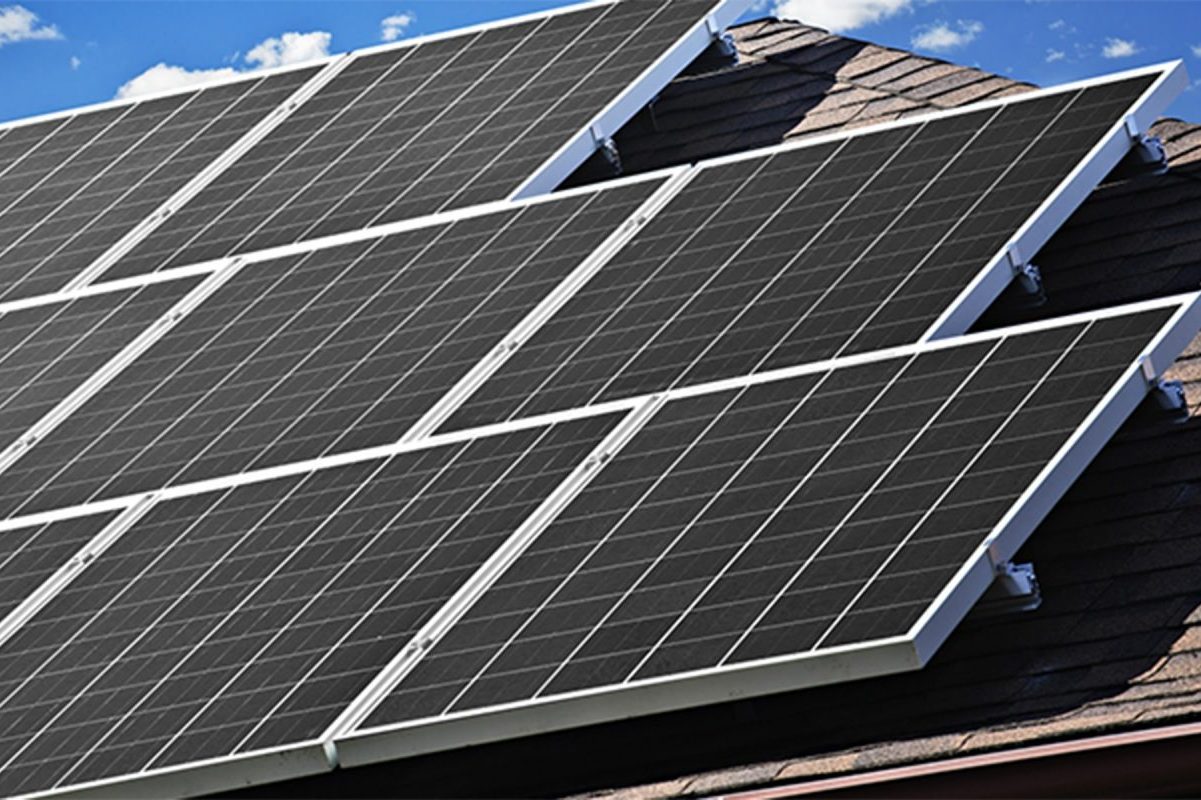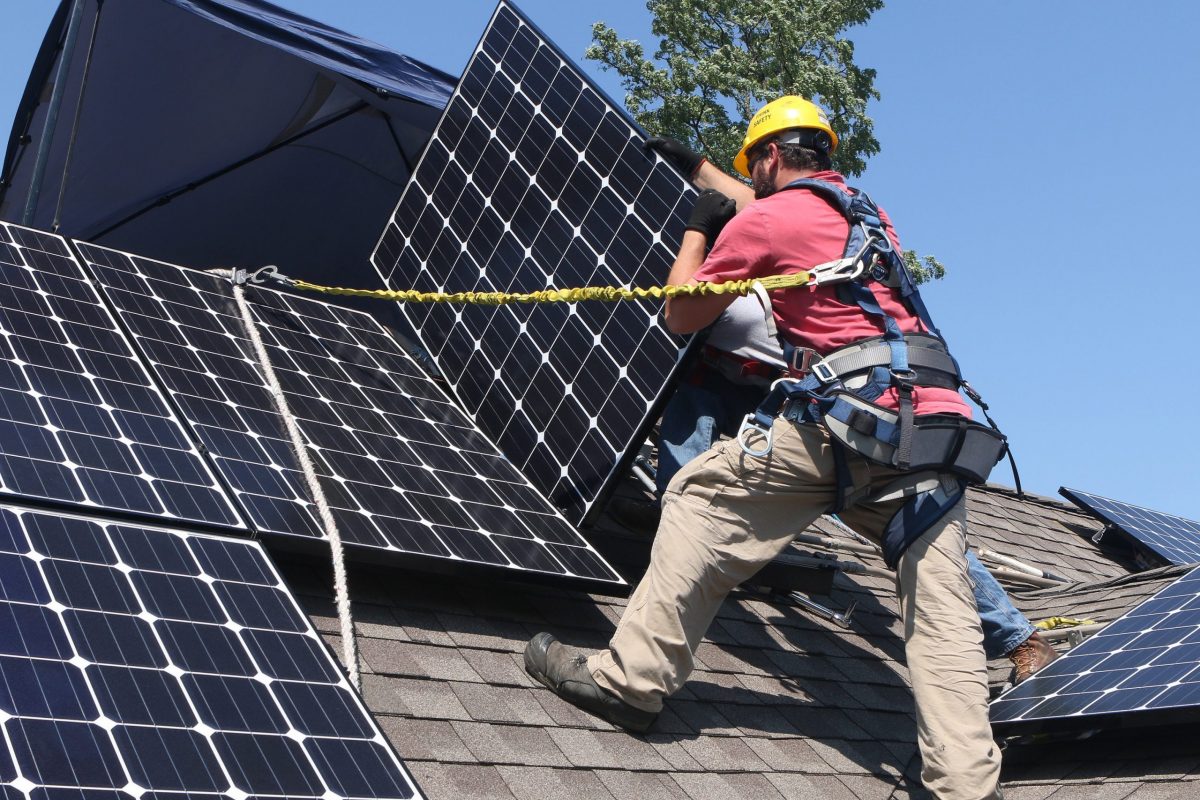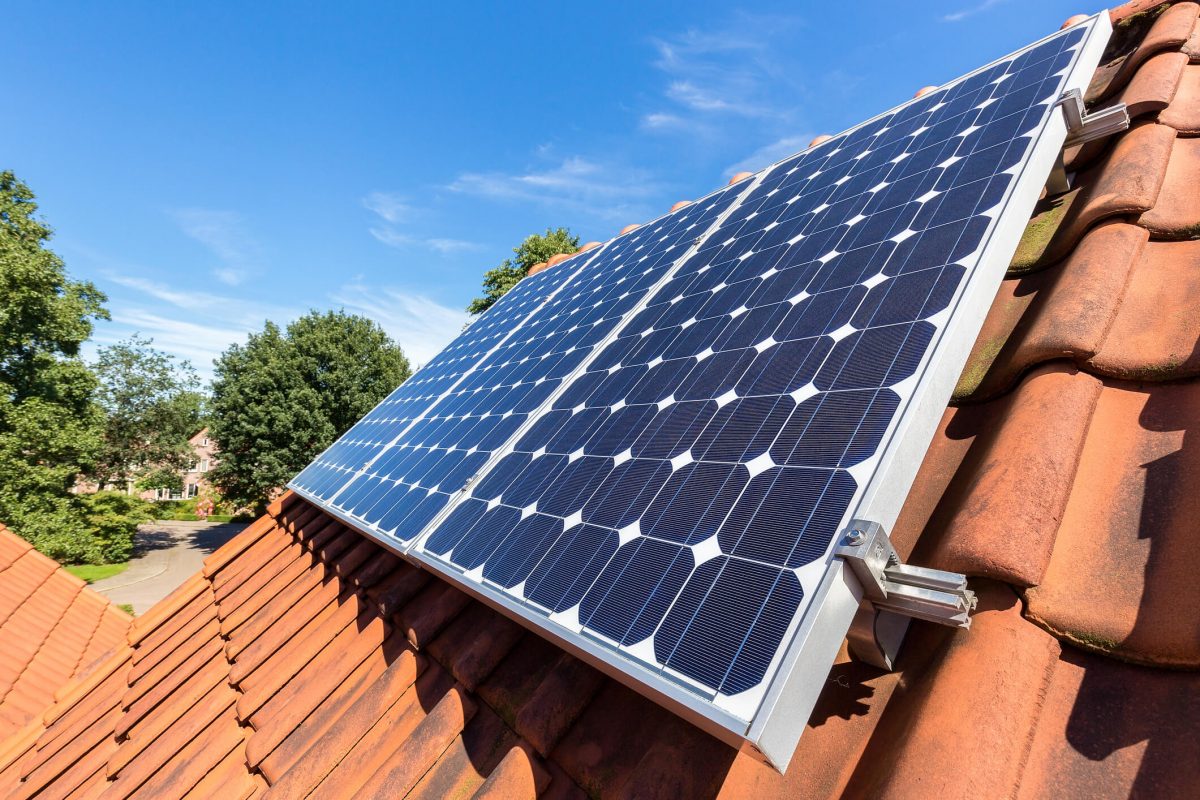In an increasingly interconnected world, five critical global challenges demand our immediate attention and collaborative action. From the urgent need for sustainable revolutionary solar technology to address climate change, to the growing wealth inequality gap that threatens social stability, these issues shape our collective future. The global food security crisis affects nearly 828 million people worldwide, while biodiversity loss continues at an unprecedented rate, threatening crucial ecosystems. Additionally, cybersecurity threats pose ever-evolving risks to our digital infrastructure and personal privacy.
These challenges are deeply interconnected, with solutions in one area often creating positive ripple effects across others. While their scope may seem overwhelming, innovative technologies, international cooperation, and grassroots movements are already making significant progress in addressing these issues. Understanding these five global challenges is crucial not just for policymakers and business leaders, but for every citizen who wants to contribute to meaningful change.
As we navigate these complex challenges, it’s essential to recognize that local actions can have global impacts. By staying informed and taking practical steps in our daily lives, we can all contribute to addressing these pressing issues while building a more sustainable and equitable world for future generations.
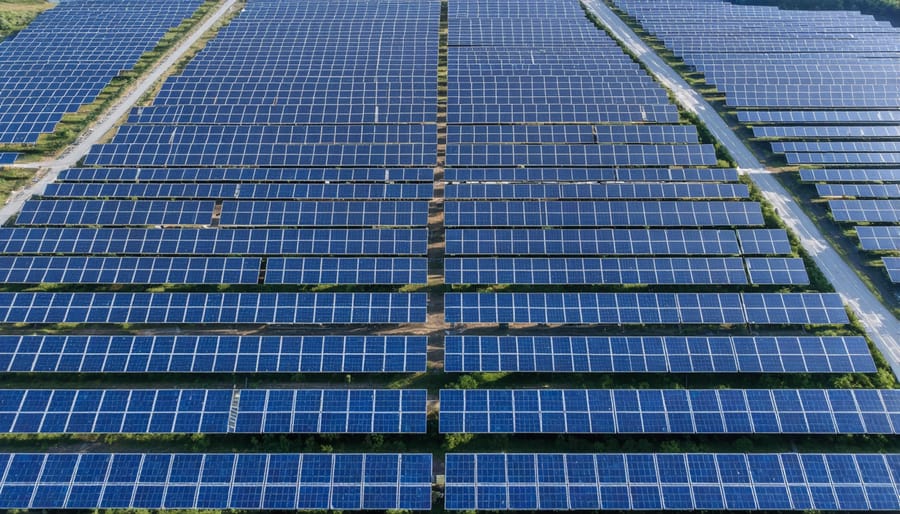
Grid Infrastructure Limitations
Aging Grid Systems
The world’s power infrastructure is showing its age, with many systems dating back 50 years or more. In developed nations like the United States, nearly 70% of transmission lines and transformers have exceeded their 25-year life expectancy. This aging infrastructure struggles to meet modern energy demands and poses significant reliability challenges.
Developing countries face even greater hurdles, with outdated systems prone to frequent blackouts and substantial energy losses during transmission. These inefficiencies not only impact daily life but also hinder economic growth and sustainable development efforts.
The transition to renewable energy sources adds another layer of complexity. Traditional power grids were designed for one-way power flow from central plants to consumers. However, modern needs require smart grids capable of managing bidirectional power flows from various sources, including solar panels and wind farms.
Modernizing these systems requires massive investments in smart grid technology, improved storage solutions, and upgraded transmission lines. Experts estimate global grid modernization costs could exceed $14 trillion by 2050. Despite these challenges, the benefits of modernization are clear: improved reliability, reduced energy losses, better integration of renewable energy, and enhanced resilience against climate-related disruptions.
Progressive utilities and governments are already implementing grid modernization programs, showing promising results in reliability and efficiency.
Capacity Bottlenecks
As solar adoption continues to grow worldwide, many existing power grids face significant challenges in handling the increased energy flow. Traditional power grids were designed for one-way electricity distribution from central power plants to consumers, not the two-way flow that solar systems require. This limitation creates bottlenecks that can affect system reliability and efficiency.
In many regions, aging transformers and power lines struggle to manage the variable nature of solar power generation. When sunshine is abundant, some neighborhoods with high solar adoption rates generate more electricity than the local infrastructure can handle, leading to potential voltage issues and system overloads.
Grid operators are also grappling with the “duck curve” phenomenon, where solar generation peaks during midday but drops as evening demand rises. This creates steep ramping requirements for traditional power plants and can strain system capacity. Additionally, many substations lack modern smart grid capabilities necessary for efficiently managing distributed solar energy.
These infrastructure limitations often result in curtailment, where solar systems must reduce their output or temporarily disconnect from the grid to prevent overload. While utilities are working to upgrade their systems, the pace of solar adoption often outstrips infrastructure improvements, creating temporary bottlenecks that need addressing.
Technical Integration Hurdles
Voltage Regulation
As more homes embrace solar panel innovations, power grids face a growing challenge: managing voltage fluctuations from distributed solar sources. When thousands of solar panels feed power into the grid simultaneously, especially on sunny days, it can create unexpected voltage spikes that stress electrical equipment and potentially damage sensitive electronics.
Smart inverters and advanced grid management systems are emerging as key solutions to this challenge. These technologies automatically adjust power output based on grid conditions, helping maintain stable voltage levels throughout the network. Many utilities are also installing voltage regulators and implementing sophisticated monitoring systems to better manage these fluctuations.
Homeowners can play their part by installing modern solar equipment with built-in voltage regulation features. These systems communicate with the grid and adjust their output accordingly, ensuring smooth integration with the existing power infrastructure. Some areas are even offering incentives for households that upgrade to smart solar systems, recognizing their contribution to grid stability.
Battery storage systems are proving particularly effective at managing voltage issues. By storing excess solar energy during peak production and releasing it steadily throughout the day, batteries help smooth out the power flow and reduce strain on the grid. This approach not only supports grid stability but also maximizes the value of home solar installations.
Grid Stability
As solar power becomes increasingly prevalent in our global energy mix, maintaining grid stability has emerged as a critical challenge. The intermittent nature of solar generation – varying with weather conditions and daylight hours – creates unique demands on power infrastructure designed for consistent, conventional power sources.
Power grid operators worldwide are implementing innovative solutions to address these challenges. Advanced battery storage systems are being deployed to store excess solar energy during peak production hours, which can then be released when needed. Smart grid technologies, utilizing artificial intelligence and real-time monitoring, help balance supply and demand more effectively.
Countries leading in solar adoption, such as Germany and Australia, have demonstrated that high levels of solar integration are possible with proper planning and infrastructure investment. Their success stories show how modernized grid systems can handle variable renewable energy while maintaining reliability.
Microgrids and distributed energy resources are also playing crucial roles in grid stability. These smaller, localized power networks can operate independently or in conjunction with the main grid, providing additional flexibility and resilience. When combined with demand response programs, where consumers adjust their energy usage based on grid conditions, these systems create a more adaptive and stable power network.
Despite these challenges, the benefits of solar integration far outweigh the technical hurdles. As storage technologies advance and grid management systems become more sophisticated, our power infrastructure continues to evolve toward a more sustainable and reliable future.
International Policy Coordination
Regulatory Framework Gaps
One of the biggest hurdles in global solar adoption is the patchwork of regulations across different countries and regions. While some nations have embraced progressive solar policies with attractive incentives and clear installation guidelines, others lag behind with outdated or restrictive regulations. This inconsistency creates challenges for manufacturers, installers, and consumers alike.
For example, some countries require extensive permitting processes that can take months, while others have streamlined applications that take just days. Grid connection standards also vary significantly, making it difficult for equipment manufacturers to create universally compatible products. These differences can lead to higher costs and longer project timelines.
Additionally, energy pricing structures and feed-in tariffs differ dramatically between regions. While some areas offer generous compensation for excess solar power fed back into the grid, others provide minimal financial incentives. This inconsistency affects the economic viability of solar projects and influences adoption rates.
The solution lies in greater international cooperation and policy harmonization. Many industry experts advocate for standardized regulations and certification processes that would make solar installation more straightforward and cost-effective while maintaining safety and quality standards. Progress is being made through international agreements and partnerships, but there’s still work to be done to create a more unified regulatory framework.
Cross-Border Challenges
As the world moves towards renewable energy integration, cross-border power sharing presents both opportunities and challenges. While global solar adoption trends show promising growth, connecting different national grids requires careful coordination and standardization.
Different countries operate their power grids with varying voltage levels, frequencies, and regulatory frameworks. This diversity creates technical hurdles when attempting to establish international connections. Additionally, nations must navigate complex agreements regarding energy pricing, transmission rights, and emergency protocols.
Political considerations also play a crucial role. Countries need to balance energy independence with the benefits of shared resources. Trust between nations becomes essential, particularly when managing peak demand periods and potential supply disruptions.
Despite these challenges, successful examples like the European Union’s interconnected grid demonstrate the potential benefits. These include improved grid stability, more efficient use of renewable resources, and reduced overall costs. Many regions are now developing similar initiatives, implementing smart grid technologies and standardized protocols to facilitate seamless cross-border energy sharing.
The key to overcoming these challenges lies in international cooperation, unified technical standards, and transparent policy frameworks. As technology advances, these barriers are becoming increasingly manageable, paving the way for a more integrated global energy network.
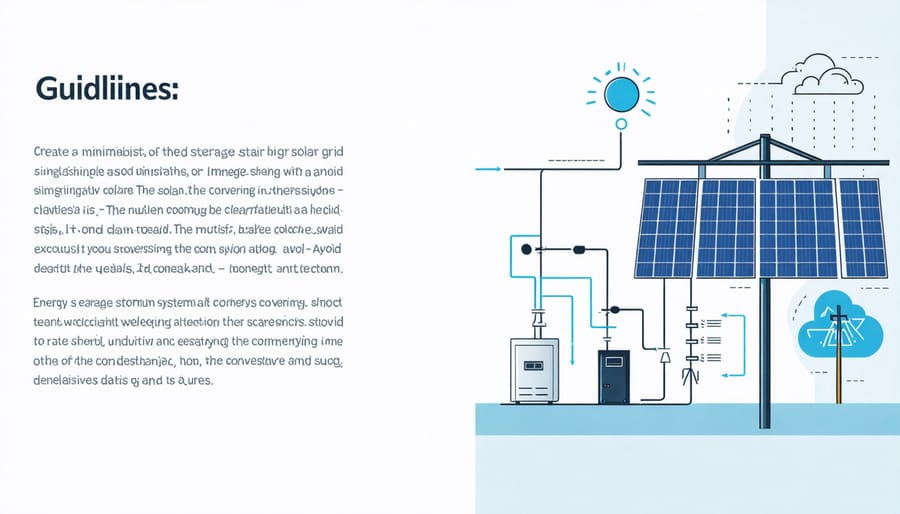
Energy Storage Solutions
Battery Technology
Battery storage technology stands at the forefront of our renewable energy future, with current solutions rapidly evolving to meet growing demands. Traditional lithium-ion batteries continue to dominate the market, offering increasingly better performance at lower costs. These improvements have made home energy storage more accessible to average homeowners, enabling them to store excess solar power for nighttime use.
Exciting developments in solid-state batteries promise even greater energy density and safer operation, potentially revolutionizing both residential and utility-scale storage. Flow batteries, though less common, are gaining traction for their longer lifespan and ability to store large amounts of energy for extended periods.
Recent breakthroughs in sodium-ion technology offer a more sustainable alternative to lithium-ion batteries, using abundant materials and potentially reducing production costs by up to 30%. Meanwhile, innovative thermal storage solutions, like molten salt systems, are proving effective for industrial-scale applications.
The future looks promising with emerging technologies like hydrogen fuel cells and advanced compressed air storage systems. These developments are crucial for creating a reliable, sustainable energy grid that can effectively manage intermittent renewable power sources while ensuring consistent energy supply for homes and businesses worldwide.
Grid-Scale Storage
As our world transitions to renewable energy, one critical challenge remains: how to store massive amounts of power for when the sun isn’t shining or the wind isn’t blowing. Grid-scale storage is essential for maintaining a reliable power supply and managing the intermittent nature of renewable energy sources.
Currently, utility companies are exploring various storage solutions, with lithium-ion batteries leading the charge. These large battery installations can store enough energy to power thousands of homes. However, their high costs and limited lifespan present significant challenges for widespread adoption.
Promising alternatives are emerging, including flow batteries, which offer longer duration storage, and innovative gravity-based systems that use surplus energy to lift heavy weights, releasing them later to generate power when needed. Compressed air storage and pumped hydro facilities are also proving effective in regions with suitable geography.
The good news is that storage costs are declining rapidly, following a similar trajectory to solar panel prices over the past decade. As technology improves and production scales up, grid-scale storage is becoming increasingly viable. This progress is crucial for achieving a sustainable energy future and ensuring reliable power delivery to homes and businesses worldwide.

Smart Grid Innovation
Digital Solutions
Digital technologies are revolutionizing how we manage solar integration challenges. Modern solar integration systems now utilize artificial intelligence and machine learning to predict energy production and consumption patterns with remarkable accuracy. Smart grid technologies enable real-time monitoring and automated load balancing, helping utilities maintain grid stability while maximizing solar power utilization. Advanced energy management systems in homes and businesses optimize power flow, storing excess energy during peak production and releasing it when needed. These digital solutions also provide homeowners with detailed insights into their energy usage patterns, empowering them to make informed decisions about their consumption habits and solar system performance. The integration of these technologies makes solar power more reliable and efficient than ever before.
AI and Machine Learning
Artificial Intelligence and machine learning are revolutionizing how we manage and optimize electrical grids worldwide. Smart algorithms now predict energy demand patterns with remarkable accuracy, helping utilities balance supply and demand more efficiently. These predictive technologies analyze weather patterns, historical usage data, and real-time consumption to forecast energy needs hours or even days in advance.
Grid operators use these insights to reduce waste, prevent outages, and seamlessly integrate renewable energy sources. For example, AI systems can anticipate when solar production will drop due to incoming clouds and automatically adjust other power sources to maintain stable supply. This intelligent grid management also helps homeowners by providing personalized energy-saving recommendations and optimizing their solar panel performance.
The technology continues to improve, with some systems now achieving prediction accuracy rates above 95%, leading to more reliable and cost-effective energy distribution for everyone.
As we look to address these global challenges, there’s reason for cautious optimism. Technological advancements and growing international cooperation are creating new opportunities for solutions. The rise of renewable energy technologies is making climate action more feasible and economically viable. Smart city initiatives and sustainable urban planning are helping address both population growth and resource management challenges.
International organizations are strengthening their collaborative efforts to tackle these issues, while innovative funding mechanisms are emerging to support global initiatives. Public awareness and engagement are also increasing, driving positive change from the ground up. Many countries are implementing progressive policies and investing in sustainable infrastructure, setting examples for others to follow.
However, success depends on continued commitment and action at all levels – from individual choices to international agreements. By embracing sustainable practices, supporting clean technologies, and fostering global cooperation, we can work toward effective solutions. The challenges we face are significant, but with coordinated effort and innovative thinking, we can create a more sustainable and equitable future for all.
The next decade will be crucial in determining our success in addressing these global issues. By acting now and maintaining momentum, we can turn these challenges into opportunities for positive transformation.







